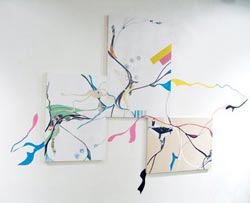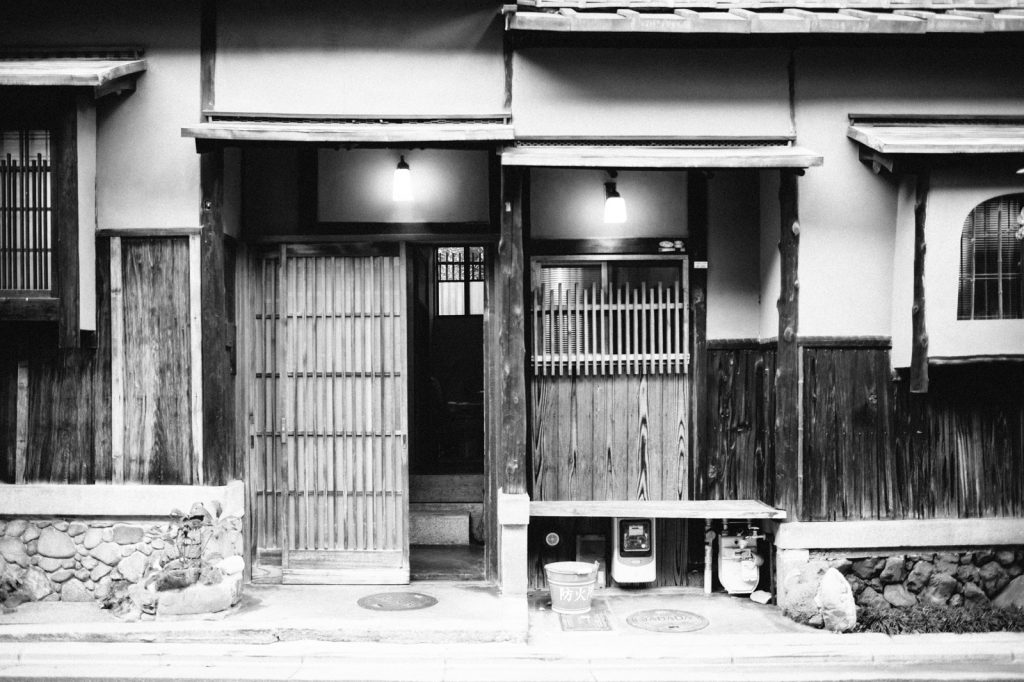Inside POJ Studio’s Kyoto Gallery and Holistic Complex
From an array of artisan works to craft classes, a cafe and even accommodations

In Kyoto’s Higashiyama Ward, the Kyoto National Museum was established to collect, house and display cultural treasures to preserve valuable national history. Taking a short walk in the neighborhood, past the Four Seasons Hotel, you’ll find a small sign that reads “Stay Shop Dine Maana Kiyomizu, POJ Studio, Cafe & Bar.” If a person were to follow this sign, they’d have to wander down a narrow Kyoto street until they discovered a hundred-year-old space, beautifully restored and filled with covetable craft items that would look at home in a museum or a modern house. From indigo tapestries to carved wood bowls, ceramic vessels and handcrafted warazaiku rice stalk weavings, each piece connects generations.
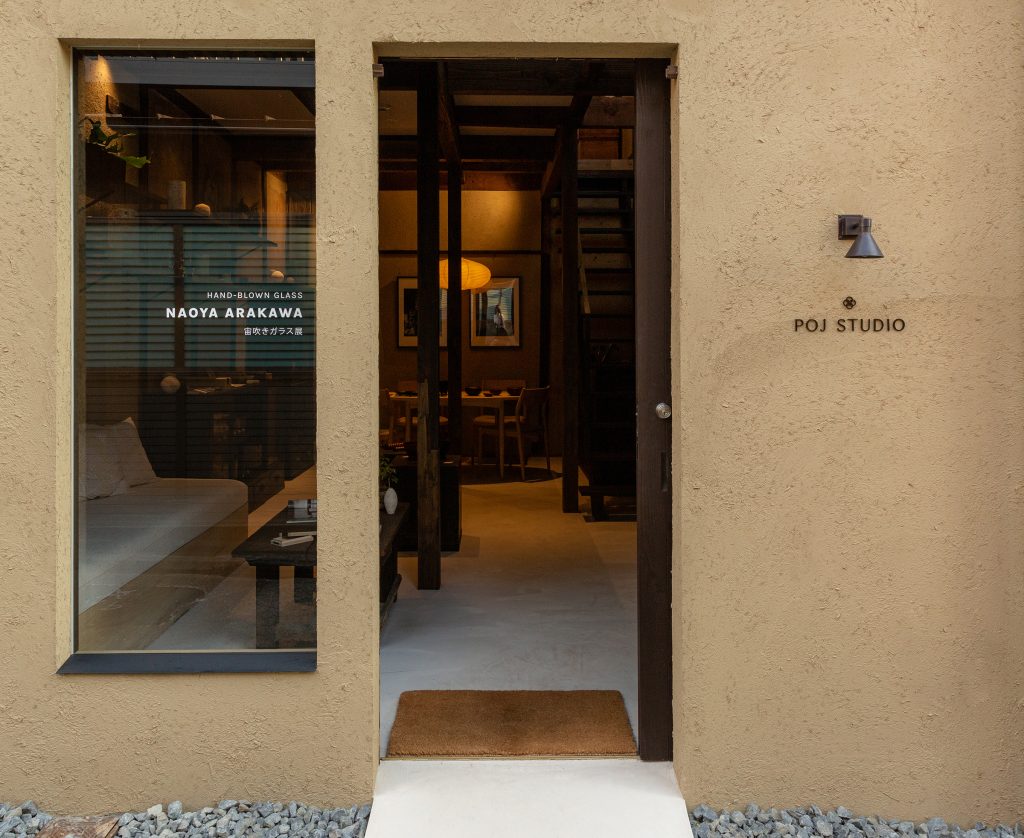
This is the world of POJ Studio (POJ is an acronym for Pieces of Japan), a new company commissioning and celebrating the work of many artisans across the country today. Co-founder Hana Tsukamoto was born in Nagoya, lived in the San Francisco Bay Area and then New York to attend the School of Visual Arts (SVA) and worked as a graphic designer before she returned to Kyoto. She met co-founder Tina Koyama and discovered that their similar interests and goals complemented one another. Together, they launched POJ in April 2020 and had an online shop operating by June. “It was perfect timing because it was the beginning of the pandemic, everyone was online shopping,” says Tsukamoto. They continued to grow, adding more items along the way.
Tsukamoto describes the POJ ethos as promoting a sustainable lifestyle with conscientious practices for preservation and longevity. “POJ is anything that you would surround yourself with in your daily life, that you keep for the rest of your life,” she says. As the pandemic shut Japan’s borders, they found inspiration in the artisan designs they could share with people around the globe, launching with a Kintsugi Kit to facilitate the process of repairing broken pottery with gold. These Kintsugi Kits continue to represent their core values and they have produced corresponding video tutorials.

As two years passed, Tsukamoto completed renovations on the adjacent buildings for her vacation rental company, Maana Homes. With Koyama, she converted one of the structures into the POJ gallery last October. It features a mixture of their designs, curation and vintage pieces. Additionally, one space was converted into Kissa Kishin café, on the ground floor facing toward Daibutsudenato Ryokuchi Park and the Toyokuni-jinja Shrine. “We wanted to create an entire holistic complex for someone staying here, a place to shop and a place to eat,” she adds. Available for short term rentals, the décor in each Maana Home features many items from POJ Studio.
Upstairs at POJ Studio, the duo offers workshops almost every day, taught by Momoko Nakamura. “You can purchase all of this and do it at home or you can learn the process here and have a little more expert advice, like in depth history and culture,” says Tsukamoto. “We also have incense-making and other seasonal workshops.” They also created a Fuki Urushi Kit that comes with two sets of chopsticks and enough lacquer paint to also cover the box so that it can be used as a bento.

“We promote things that are long lasting. For us the educational part is very, very important, which is why we decided to do the workshops. And the kits for us are a core product because it teaches you about the craft. You get a bit of an introduction. And then if you develop some interests from it, maybe you come back and take a class,” Tsukamoto explains.
With most designs made locally in Kyoto and around Japan, each item is presented with details about the artisans. The Tahara family has been making wooden boxes with sashimono joinery techniques since 1877 and now apply these traditional techniques to manufacture modern trays. Together with POJ, they collaborated on a new Kiri Modular Storage Set, a custom stackable series of boxes to be useful for many purposes from storing utensils to makeup or art supplies.

POJ also stocks handmade embroidered pillowcases crafted by the traditional technique of sashiko stitching, which dates back to the 17th century. This fabric process embodies POJ’s mission to source from a socially conscious company. In fact, their partner works with repurposed textiles and creates jobs for people with disabilities.
Eye-catching blue tapestries and noren by Kiyoe Masao are shibori-dyed with natural indigo. Made in Kyoto, his workshop can be found on a path winding up to Kiyomizu Temple, which saw a steep drop off in tourism and in-person shopping during the pandemic’s shutdown. When Tsukamoto and Koyama met Masao, they found a way to work together to share his work with more people in Japan and make his ethereal designs accessible to people around the world.
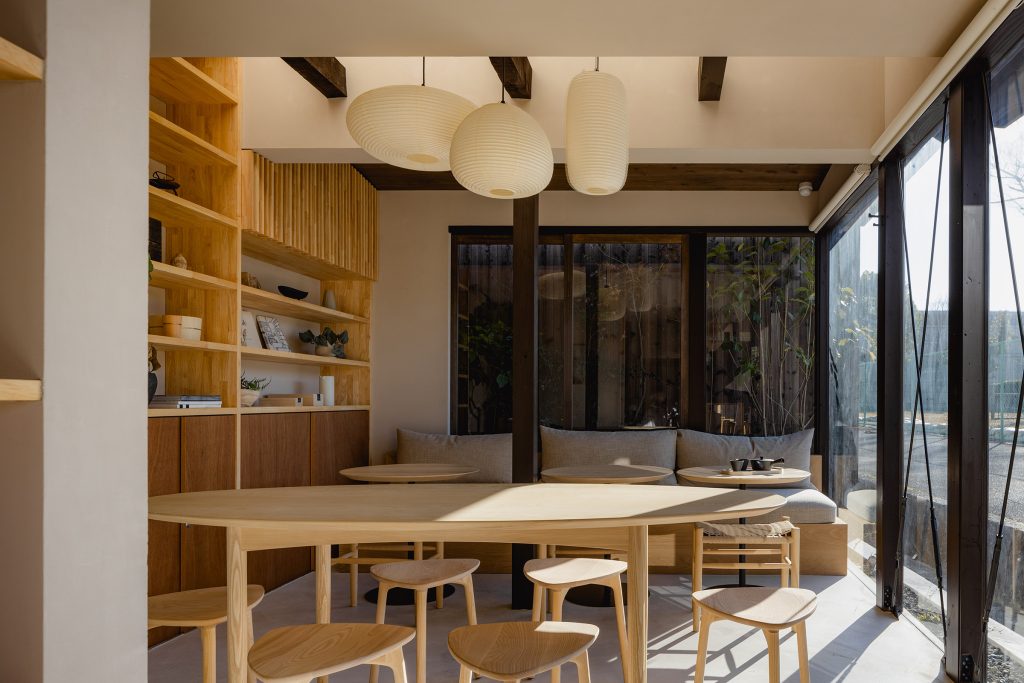
The open airy Kissa Kishin café space serves coffee, tea, egg dishes, Japanese rice balls and sandwiches. Tsukamoto points out a couple of stools with woven seats. Soon they will be selling DIY kits to make them. To prepare for the launch of the new item, the whole POJ team got together to experience the detailed process for making a stool first hand.
“You want to make something that’s perfect, but then at some point you realize that what’s really important is that you can sit on it and it holds your body. I will never be able to throw away the stool for that reason because I made it myself. Now I’m going to cherish it and see it as much more valuable,” Tsukamoto says. “It is like a piece of me is embedded in this stool.”
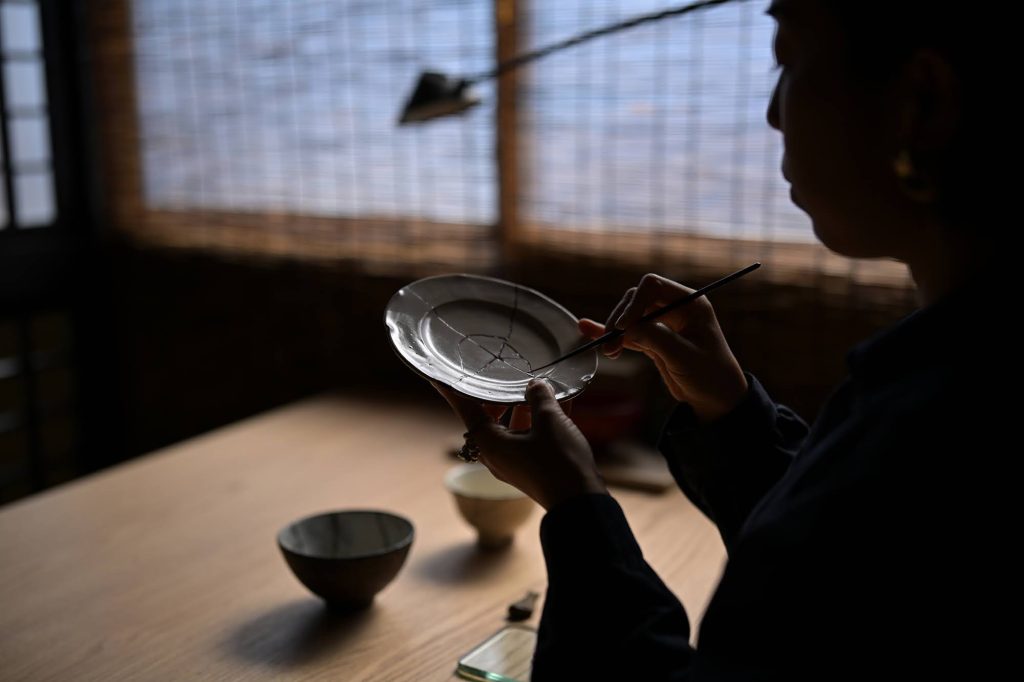
On a nearby shelf sits a small ceramic plate with a line of gold glowing across the glaze. Tsukamoto explains it was one of the first items they restored with one of their own kits. “Kintsugi is sustainable. We are repairing something, so we can use it forever,” she says. “My mindset is so different now.” Every time she breaks something, she feels excited because it has the potential to become something more meaningful. “I’m adding a piece of memory to a cup. Maybe I would have used it for five years. But then if I do Kintsugi repair myself, then I think I probably will keep it for the rest of my life.”
POJ embodies the way traditional craft can be relevant in the modern world. Tsukamoto and Koyama have noticed increasing interest in the philosophy of Kintsugi, and its therapeutic benefits. They see people sign up for their workshops and focus on the process and the benefits of taking time to learn to make something with their hands. To experience POJ fully requires shopping at the gallery store, signing up for a workshop, staying in their rental homes, eating at Kissa Kishin and bringing home handcrafted designs that will stand the test of time. It’s an interwoven world that’s certainly worth a visit.
Images courtesy of POJ Studio

